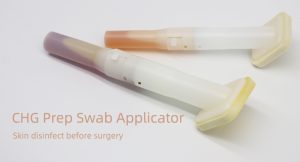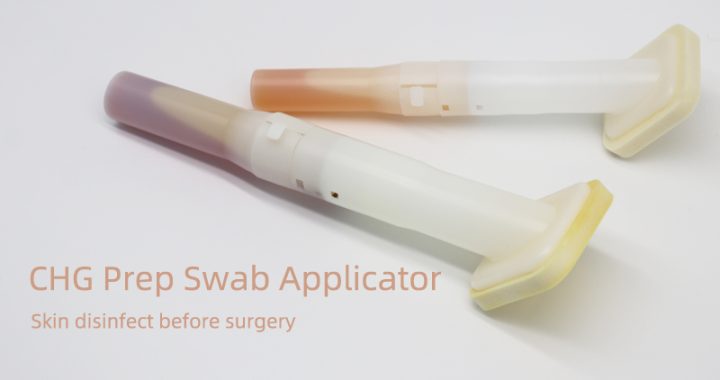How to solve the disinfection before surgery
Pre – operative Disinfection Solutions
Pre – operative disinfection is of utmost importance and involves the disinfection of surgical personnel and the patient’s surgical area. The specific solutions are as follows:
Disinfection of Surgical Personnel
General Preparation
Surgical personnel should change into special scrub suits and trousers in the operating room. The upper garment should be tucked into the trousers to prevent dust and bacteria on the clothing from contaminating the surgical area. At the same time, put on a hat and a mask. The hat should cover all the hair, and the mask should cover the mouth and nose. Trim the fingernails and remove the dirt under the nail edges.
Arm Disinfection
Soap – and – water Scrubbing Method
- First, wash the arms with soap and running water.
- Dip a disinfected scrub brush into boiled soapy water. Starting from the fingertips, scrub the fingers, palms, backs of the hands, forearms, elbows, and the lower one – third of the upper arms in sequence, scrubbing each section back – and – forth 3 – 5 times. The scrubbing area includes the hands, forearms, and the lower one – third of the upper arms, with special attention to the nail edges, nail grooves, finger webs, palm prints, and wrists.
- Scrub each arm for 3 minutes, a total of 6 minutes for both arms.
- Rinse the arms from the fingertips to the elbows with running water, allowing the water to flow from the hands to the elbows to avoid back – flow of contaminated water to the hands.
- Dry the arms from the hands to the elbows with a sterile towel. The towel that has wiped the elbows should not be used to wipe the hands again.
- Immerse the hands and forearms in 70% alcohol or 0.1% benzalkonium bromide solution for 5 minutes, with the immersion range up to 6 cm above the elbow. After immersion disinfection, keep the hands in an arched position to dry. The hands should not be lowered and should not touch any non – disinfected items.
Povidone – iodine Scrubbing Method
- Rinse the hands, forearms to 10 cm above the elbow with clean water.
- Dip a disinfected scrub brush into 0.5% povidone – iodine solution and scrub the hands for 3 minutes according to the sequence and range of the soap – and – water scrubbing method, ensuring that the povidone – iodine fully contacts the skin.
- Rinse off the povidone – iodine with running water and dry with a sterile towel.
- Then, smear the hands and forearms twice with a gauze soaked in 0.5% povidone – iodine. Wait for it to dry before putting on the surgical gown and gloves.
Chlorhexidine Scrubbing Method
- Rinse the hands, forearms to 10 cm above the elbow with clean water.
- Dip a disinfected scrub brush into 4% chlorhexidine solution and scrub for 3 minutes according to the conventional sequence. Ensure that the chlorhexidine solution fully contacts the skin during scrubbing to thoroughly clean the skin of the arms.
- Rinse thoroughly with running water and dry with a sterile towel.
- Take an appropriate amount of chlorhexidine alcohol disinfectant and smear it on the hands, forearms to 6 cm above the elbow. Wait for it to dry naturally before proceeding.
Wearing a Sterile Surgical Gown
Traditional Back – opening Surgical Gown
- Pick up the two corners of the collar of the surgical gown with both hands, shake it open, being careful not to face the outer side of the surgical gown towards yourself.
- Gently toss the surgical gown, and then insert both hands into the sleeves, stretching the arms forward. Do not raise the arms higher than the shoulders or spread them to the left or right to avoid touching non – disinfected items.
- The circulating nurse assists in pulling up the surgical gown from behind and ties the collar and back straps.
- The person wearing the gown crosses their hands, leans slightly forward, pinches the waistband with their fingers, and hands it to the rear for the circulating nurse to catch and tie.
Full – coverage Surgical Gown (also known as wrapped – back surgical gown)
- The steps of putting on the gown are similar to those of the traditional back – opening surgical gown. First, put on the surgical gown and tie the collar strap.
- After putting on sterile gloves, untie the loose knot at the waist, pull the back piece of the surgical gown forward to wrap the back, and then hand the waistband to the circulating nurse to tie tightly behind the back, so that the back of the surgical personnel can also be protected aseptically.
Wearing Sterile Gloves
Open – style Gloving Method

CHG IPA APPLICATOY
- Take out the sterile talcum powder in the glove clip and gently apply it to both hands, being careful not to sprinkle the talcum powder in the surgical area.
- Hold the folded part of the glove with the left hand, and insert the right hand into the glove, aligning with the five fingers.
- Insert the four fingers (except the thumb) of the gloved right hand into the folded part of the left – hand glove. Then, the left hand inserts into the glove, and turn the folded part of the glove back to cover the cuff of the surgical gown.
- Rinse the outside of the gloves with sterile saline to remove the talcum powder, preventing the talcum powder from irritating the tissues.
Closed – style Gloving Method
- After putting on the surgical gown with the hands not yet extended out of the cuffs, hold the folded parts of the gloves with both hands through the sleeves and take out the gloves.
- First, insert the right hand into the right – hand glove, being careful not to let the outside of the glove touch the surgical gown.
- Use the gloved right hand to grab the folded part of the left – hand glove through the sleeve, and insert the left hand into the glove.
- Turn the folded parts of the gloves back with both hands to cover the cuffs of the surgical gown, and then extend the hands out of the cuffs.

